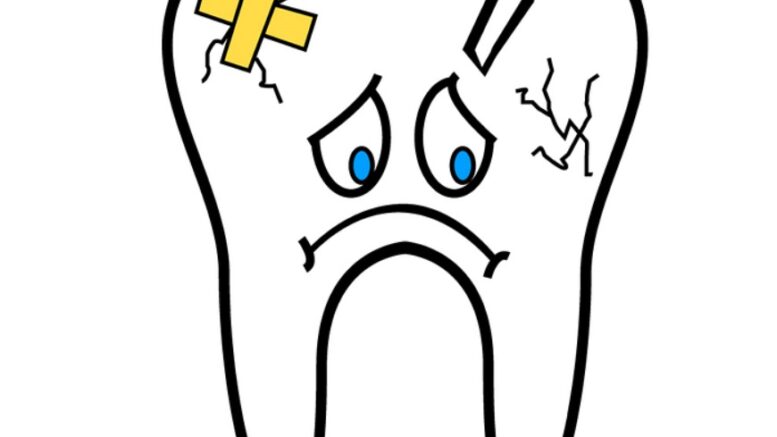Teeth are very hard and strong, since they are built of reinforced bone tissue. However, despite their durability, they can still get damaged and crack for many different reasons. In particular, teeth where fillings or cavities are present are weaker, and more prone to cracking than stong, healthy ones. The crack might not be visibile, and any part of the the tooth can get damaged – from its crown up to the very root. The smallest ones (called craze lines) are generally harmless and do not need specific treatment, while bigger, more important ones can be visible and can lead to serious damage.
Why teeth crack and what can you do about that?
Teeth can crack for a lot of different reasons. The most common ones include clenching your teeth at night (a phenomenon known as bruxism), chewing hard foods or accidentally chewing a small stone, suffering a facial trauma during sports activities, or biting something too hard (like a metal pen). Once a tooth is cracked, depending on the size and extent of the damage, the patient may or may not need treatment. A minuscule crack that does not cause any discomfort does not need treatment, and generally tend to heal on its own. For larger, more severe injuries that cause significant pain, seeking the help of dentist who offers cracked teeth treatment may be necessary.
But how can you tell whether your tooth has cracked? Here are 3 signs you should look for:
Pain when you eat
A cracked tooth is not always associated with symptoms, and you might not even realize you have one. However, if you do have a weakened tooth, the most common symptom you can feel is a sharp pain whenever you chew something – especially if it’s hard enough. Biting food can cause the crack to flex, stimulating the nerve inside the tooth. Pain is not always persistent or recurrent every time you eat – it may come and go and sometimes be nothing but a mild discomfort. However, if the pain is sharp and intense, the crack might be profound enough to require an immediate trip to the dentist.
Increased sensitivity
Sometimes the discomfort around the tooth and its surrounding gums can become very intense when chewing foods that are particularly hot, cold, sour or sweet. A crack might, in fact, expose the nerve to external stimuli such as those caused by sudden variation of temperature or sugar concentration. This increased sensitivity may eventually become so strong that you will feel uncomfortable drinking a soda or a hot cup of tea.
Swelling around the tooth
Probably the most dangerous sign of a cracked tooth, is a generalized swelling around the damaged tooth or a bump on the nearby gum. Although this swelling may initially look harmless, it univocally means that an infection is occurring. The crack might, in fact, extend up to the very root canal, causing the gum line around the fracture to be come inflamed and infected. The presence of bacteria can weaken the enamel, further expanding the crack or causing cavities. If signs of infection are present, an emergency dental visit must be scheduled as soon as possible.
Conclusion
A cracked tooth can be a mild annoyance or a true dental emergency. It all depends on the circumstances that caused it and on the extent of the damage. Because of that, you should never underestimate its symptoms, and seek the advice of your dentis as soon as possible.
